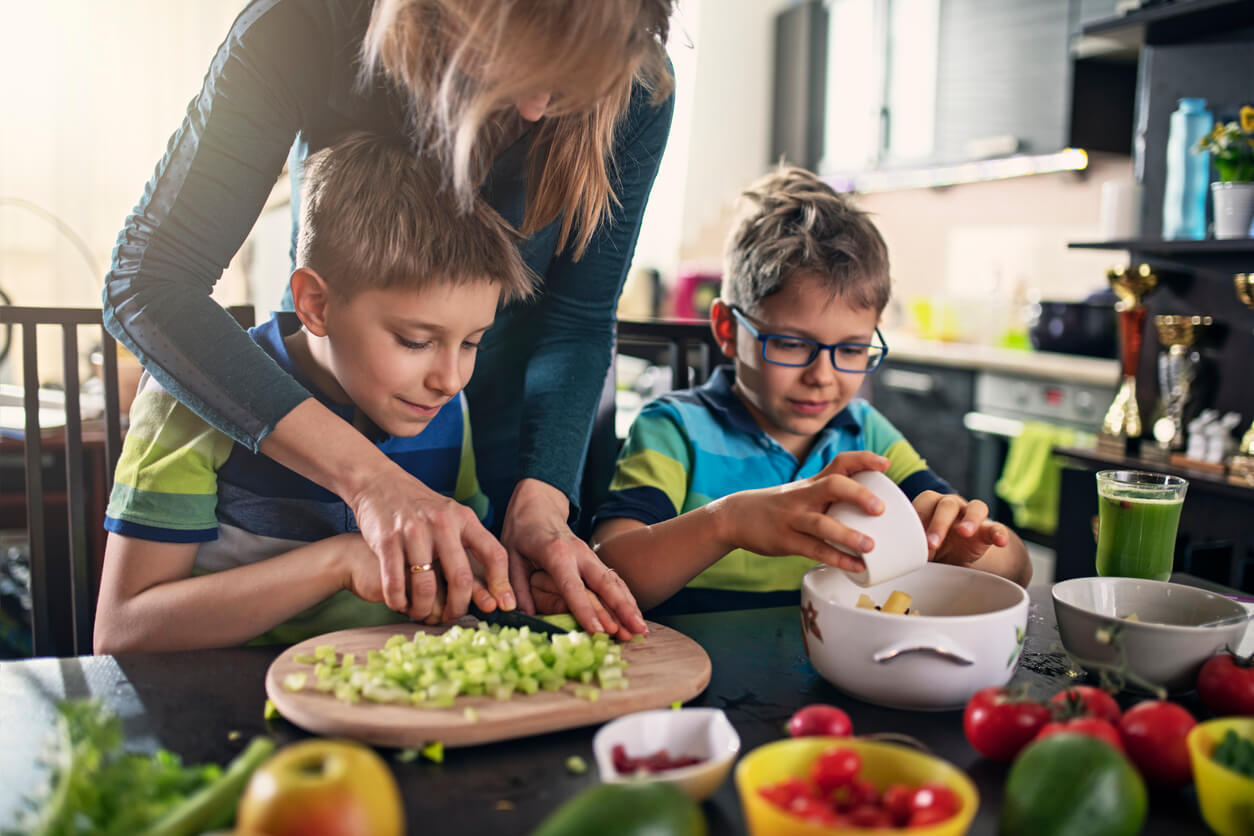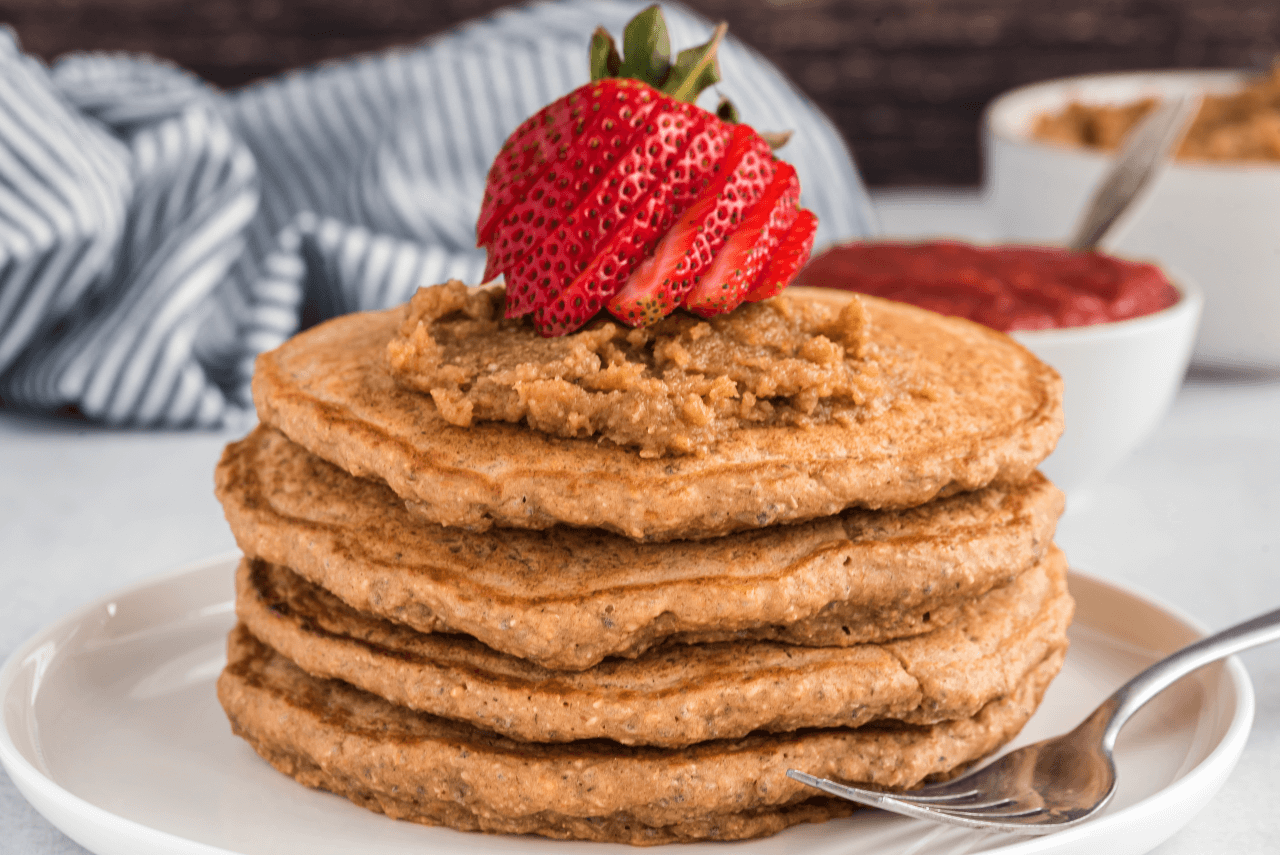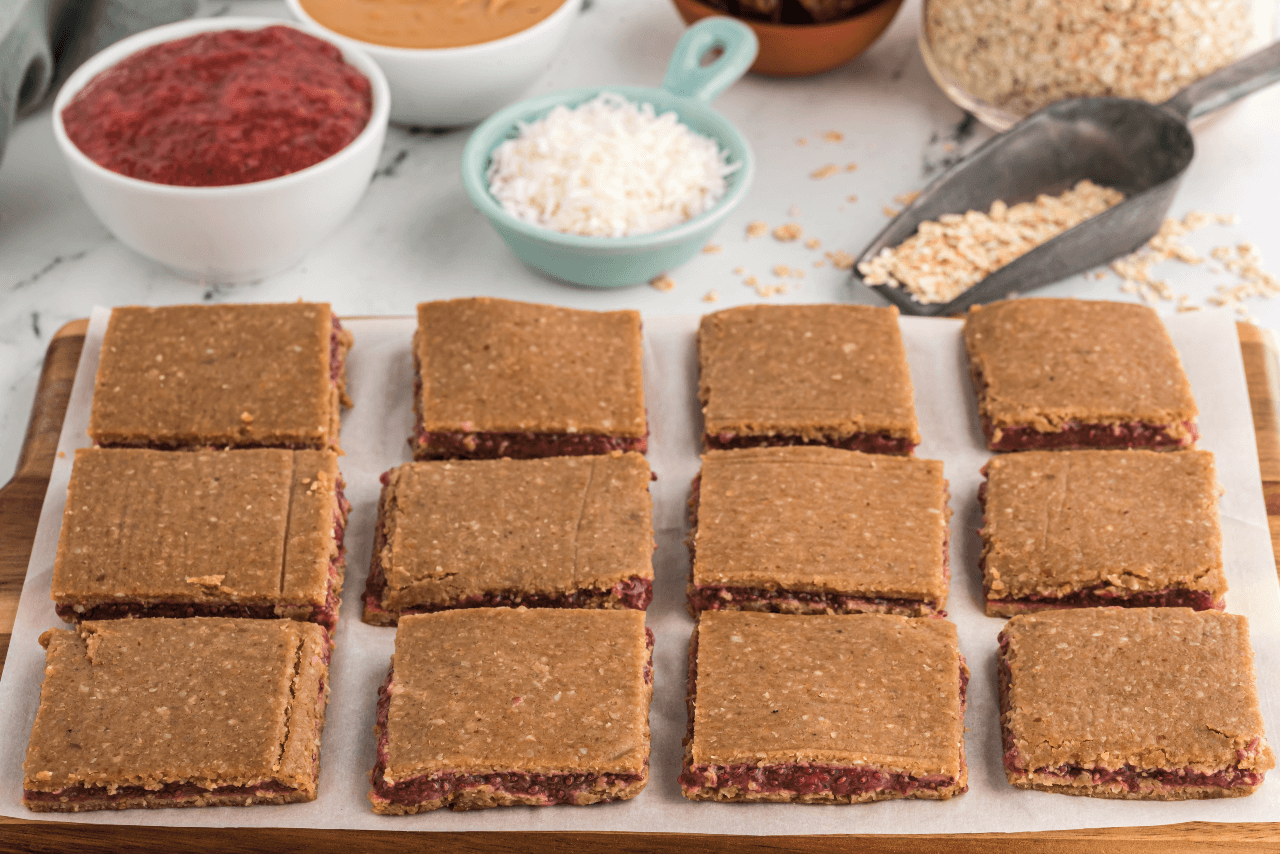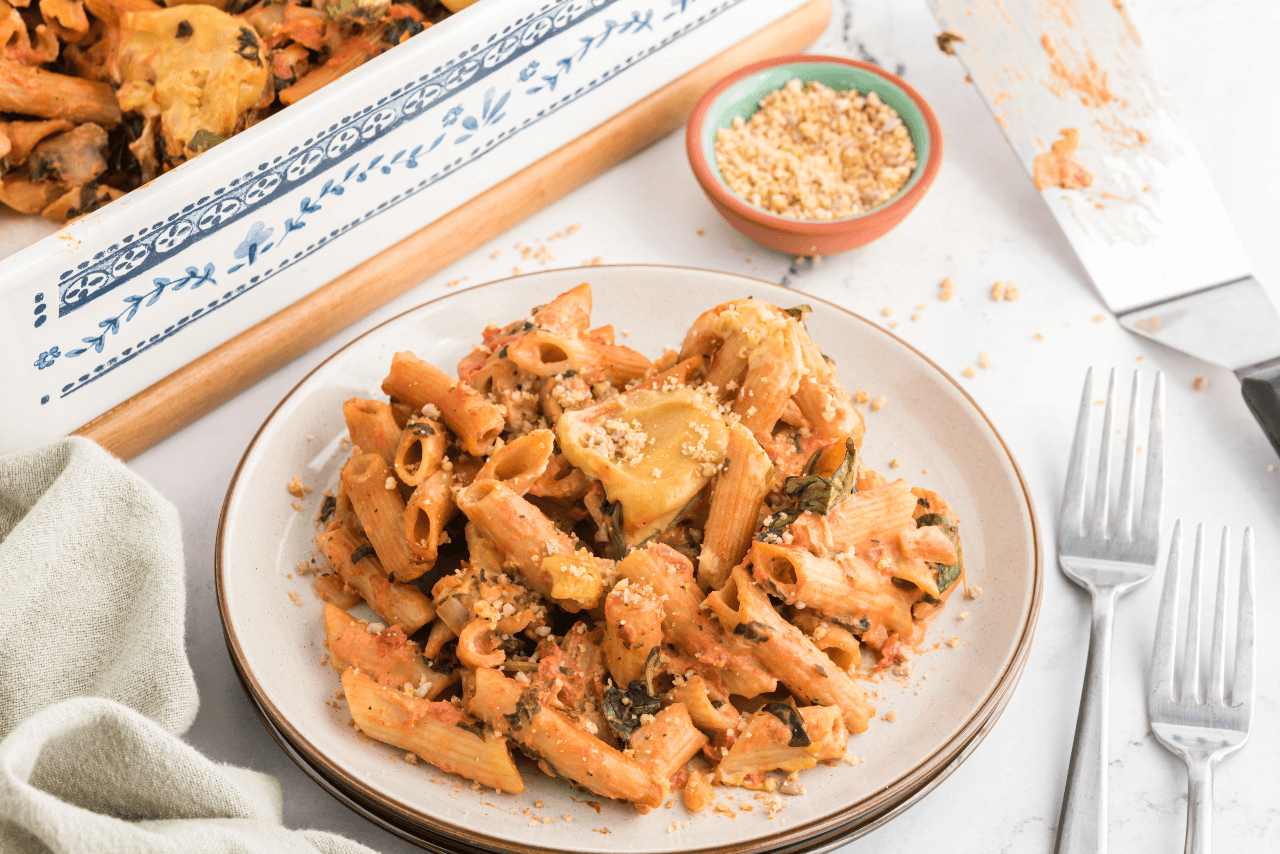Do you ever worry about the health of the people you love — and wish they ate healthier food? If you’ve tried to help others move in a positive direction, has it ever felt as if you were banging your head against a brick wall?
If you know my story, you might think I can’t relate. After all, I grew up eating a whole foods, plant-powered diet in the home of one of the world’s best-known proponents of healthy, plant-based eating (my dad is Food Revolution Network co-founder and president John Robbins, author of many books on health, nutrition, and social and environmental justice, including the 1987 bestseller Diet for a New America.) How could I possibly have any idea what family conflict around food is like?
Hear me out.
When I was a kid, we had our fair share of food conflicts in our extended family. My grandpa Irv, the co-founder of Baskin-Robbins, wanted nothing to do with our “hippie” eating style. He ate the standard American diet with gusto — including, of course, lots and lots of his favorite ice cream.
When my mom, dad, and I would visit my dad’s parents, we sometimes stayed in a rented condo because sharing meals could become such a point of friction. At one point, my grandma Irma famously declared, “You will NOT cook tofu in my kitchen!” She was clear who was in charge in her domain, adding: “When you’re in my house, you will eat what I serve.”
Since my grandma wasn’t exactly a black belt in flexibility, we did not try to convince her to let us cook our simple, plant-based meals in her kitchen. Instead, we prepared most of our meals separately in our condo kitchen.
We didn’t want differences over food to keep us from being a family. But because those differences were based in very different realities and values systems, we struggled with the conflicts and separations they caused.
Blood Can Be Thicker Than Ice Cream
Eventually, my grandpa faced the consequences of his dietary pattern in the form of a health crisis. Suffering from diabetes, heart disease, and weight problems, he was told by his cardiologist that unless he changed his diet, he didn’t have long to live. And in one of life’s great ironies, his cardiologist handed Irv Robbins a copy of the book Diet for a New America, by one John Robbins.
To his great credit, grandpa Irv swallowed his pride and read the book, changed his diet radically, and things became infinitely more amicable during our times together. Before long, tofu was even sighted in my grandma’s kitchen. It turned out that, in our case at least, blood was thicker, even, than ice cream. But that change was a long time in coming — and if we had made more of a fuss about diet during our years of conflict, it might not have come at all.
Leaving a Better World for Future Generations
A lot has changed in the world since I was a child. These days, it’s harder to ignore the practical and ethical reasons to reduce animal consumption. As global climate chaos threatens to turn our planet into a living (or dying!) hell, and environmental crises threaten ecosystems and our own health, more and more people are understanding how dependent we are on the well-being of the whole Earth community.
Survey results on sustainability often show that each generation has become progressively more aware of the importance of living sustainably. In a 2019 study out of Southern Cross University, for example, over three-quarters of survey respondents said that they wanted to learn how to live more sustainably, so they can leave a better planet for future generations.
Increasingly, people are making the connection between living sustainably and eating lower on the food chain — that is, eating fewer animals and animal products, and more plants. This is driven by environmental worries, and also by concerns about human health and animal welfare.
More and more people are motivated by the discovery that if the world switched to a largely plant-based diet, we would cut the greenhouse gas emissions caused by food production by 70%.
The Future is Plant-Based
Another way to live sustainably, of course, is not to die prematurely from preventable chronic conditions. One ambitious study looked at diet and health status in over 400,000 Americans over the age of 50. The researchers found, to their amazement, that those who swapped out just 3% of the animal protein in their diet for plant protein were 10% less likely to die over the 16 years under study.
According to a report from GlobalData, an analytics company that works with 4,000 of the world’s largest companies, a rapidly growing share of the world population is either reducing meat consumption or leaving meat off the table altogether.
The plant-based movement is gaining traction in the US as well. A 2020 study from Nielsen reveals that 40% of Americans are now making an effort to eat more plant-based foods.
But even though there is more awareness around the benefits of plant-based eating, when it comes to healthy eating as a family, obstacles can continue to confront us.
Obstacles to Plant-Based Eating
You may not be dealing, as my family was, with a patriarch whose very identity was tied to dairy and sugar, but there are plenty of other issues that can get in the way of healthy transitions, and indeed, of respectful conversations.
You may not be on the same page as others in your family who are used to eating a certain way or can’t imagine “giving up” certain dishes.
Or you may have picky eaters (both adults and kids) who’ve grown up thinking they don’t like vegetables or that veggie-based cuisine is “rabbit food.”
Since most of us get our nutritional knowledge from industry-sponsored school curricula or straight-up industry marketing and PR masquerading as legitimate science, many people have huge, unacknowledged gaps in knowledge on nutrition, on where their food actually comes from, and the impact of their food choices on health, animal welfare, and the environment.
And you may have people in your household who have read books or articles that said that they should base their diet around animal products (or been told this by health professionals), or that eating certain fruits, vegetables, or legumes is dangerous. Many of these books and articles champion fad diets that become popular whether or not they are based on scientific fact.
Given those multiple obstacles and minefields, how can you encourage your family to eat more plant-based? Below, we’ll look at why eating plant-based as a family is valuable, offer tips to encourage your family to participate in this way of eating, and share some tasty recipes to make it easier and — gasp! — more fun.
Starting a Dialogue Around Plant-Based Eating
If you want to encourage your family to shift to a plant-based way of eating or take their plant-based eating further, you’ll probably want to get clear about your — and their — motivations before launching a discussion.
Start by answering the following questions:
Why is eating this way important to you? And why might it be important to your family members?
Are you or they concerned about what’s in food? Do your children or other family members suffer from health or behavioral problems that could be improved with a healthier diet? Might they be more motivated to eat plant-based in order to help reverse climate change and promote sustainability? And are you or they interested in animal welfare, and potentially motivated to not want to participate in the cruelty inherent in factory farming?
Before diving right into big changes that could send ripples through the household, communicate your reasoning — what matters to you, and why. It might be good to be open-hearted here, and vulnerable. Share how much this means to you, and let them know if you’re willing to change some long-standing patterns in support of your values.
Do you expect to be healthier? Have more energy? Be in less pain? Be more upbeat and cheerful? One powerful way to get buy-in is to ask them how those improvements might make their lives better.
Share your fears and misgivings as well. What foods will you miss? What worries you about making this change? Where might you struggle? What help would you like from them?
You’ll be in a much stronger position to lead if you’re out in front, demonstrating not only the behaviors and choices but also the consequences and benefits of a more plant-based diet. You may have to go it alone for a while, but that will also speak to your commitment and seriousness and may help to convince skeptical family members that this isn’t another fad.
Empathize with Family Members
Another powerful communication strategy at this point is to empathize with family members proactively. After all, when you change, you might threaten the status quo. Your family members might worry about what this will do to your shared social life, or whether you’ll still see them as a good cook, or about the loss of intimacy that shared meals can provide. If you go ahead and get healthy, and become more active, does that mean you might leave them behind if they don’t immediately follow?
Children may worry about not being able to go to their favorite restaurants or have their favorite meals at home anymore. They may worry about being singled out at school for being different, or for coming from a home where family members eat so differently from the mainstream.
Ask about their concerns, and don’t try to convince them that they’re silly, overblown, or irrelevant. Instead, acknowledge that their feelings are valid and ask questions that show you care about how they feel. That can go a long way to helping them feel more open to upcoming changes.
Of course, it can also help to troubleshoot and explore solutions to their concerns. And you may want to make sure that they have an opportunity to feel heard before you try to fix everything.
Look for Openings
Once you’ve begun the plant-based transition yourself, you can start looking for openings to talk to other family members. But remember to meet them where they are, and come from a place of humility. If you come across as overbearing or a know-it-all, you’ll just feed their resistance to change. If you ask about their desires and goals, and tie plant-based eating to the outcomes they want, you can have respectful conversations in which they have the autonomy and space to make their own decisions.
For example: Are they concerned about their health or their weight? About increasing athletic performance? About preventing Alzheimer’s or other aging-related ailments? Are they concerned with ethical, environmental, or social issues? Do they love fresh and tasty food?
Children may not relate to preventing chronic disease, but they may be interested in the climate impact of plant-based eating, in animal welfare, or in being healthy and strong like their heroes. Many kids today look up to Greta Thunberg, for example, and might be intrigued to know that she eats an entirely plant-based diet.
Having these conversations in a respectful way will help you determine whether your family is willing to go plant-based all at once, if it’s something you can move toward over time, or if you need to go “solo,” at least at the outset.
How to Involve Your Family in Going Plant-Based
If your family has expressed any interest — either in going all-in or in making incremental changes — you can employ a range of activities to make it a fun and rewarding experience and to increase the likelihood that the changes will stick.
Grow Food Together
One of the most reliably successful ways to encourage kids (especially) to eat fruits and vegetables is to grow your own as a family. Take inspiration from school gardens, which show us that children love to eat what they grow, and can learn about food and nutrition in the process.
If you have gardening space in your yard, give your kids their own garden bed and let them choose what to plant. Going through seed catalogs in the winter can be a fun activity (just ask any adult gardener who squeals with excitement, and salivates incessantly, when doing so), as they circle the colorful photos of delicious produce and discover whether those plants can thrive in their garden zone, soil, and sunlight conditions. (Here’s information on how to decide what to plant when.)
Gardens are not only fun sources of delicious produce that are far superior to supermarket fare, but they can also alleviate some anxiety about the security of our food supply. If you have family members who are concerned about pesticides, GMOs, or future disruptions to crops or distribution such as those caused by supply chain breakdowns or extreme weather events, a garden may help them feel more in control.
If you don’t have outdoor space, consider starting an indoor garden. Even in limited space, with limited sunlight, you and your family can still participate and wonder at the miracle of seeds growing into plants that can both feed you and flavor your meals.
Another option is to get involved in a local community garden. This offers several advantages, including having good soil already prepared and ready to go, getting advice and guidance from experienced gardeners, and the social benefits of lots of neighbors working together for a common goal.
Educate Yourselves Together
When my dad published Diet for a New America, there was almost no publicly available information on the benefits and how-tos of a plant-based diet. The information he shared about the impact of plant and animal foods on health and the environment was eye-opening to almost everyone.
These days, there are so many books, websites, YouTube channels, Instagram accounts, and full-length documentaries explaining the whys and hows of going plant-based, you could practically spend a whole year entertained and educated by this new genre.
You can watch wonderful plant-based food documentaries as a family. Some are totally upbeat, focusing on the health and performance benefits of the diet, such as Game Changers. This film has had an impact on a generation of influencers thanks to its portrayals of some of the world’s best athletes thriving on a plant-based diet.
Others are heavy on the science, such as Forks Over Knives. Still others focus on environmental impacts, like PlanEat and Food, Inc. Some documentaries show grisly scenes of cruelty to animals (Earthlings comes to mind) and may not be appropriate to show to young children or those who are highly sensitive. Others, like Supersize Me, are lighter and even funny, while still conveying an important message.
Pick Out Recipes Together
One of the best ways to encourage people to change, according to Peter Bregman and Howie Jacobson’s book, You Can Change Other People, is to give them as much control and autonomy as possible. That way, they don’t feel like you’re trying to change them, and therefore don’t resist being changed. Involving kids and other family members in picking out meals will make them more curious about the end result and more willing to try the foods they’ve selected.
Get some plant-based cookbooks and ask family members to go through them and choose recipes to make and taste. Here’s a list of some of my favorites.
Shop Together
In a world of irresponsible marketing claims and rampant “food label illiteracy,” shopping together and exploring the real nutritional values of different foods can be very empowering for kids and adults alike. Paying attention to food labels will allow you to focus on family nutrition and tell truth from fiction when reading the nutrition facts on a box of cereal or bottle of juice. In other words, you’ll avoid being fooled by industry “greenwashing.”
Of course, some of the healthiest foods — fruits and veggies — don’t have labels at all (nor do whole grains and legumes, when you buy them in bulk). When you go shopping as a family, prioritize collecting groceries from the outer aisles where the healthiest food often is. Empower kids by letting them pick out a produce item of their choice. Some smaller stores and farmers markets even encourage kids to choose and eat a piece of produce at the store for free! Or turn shopping into a game by asking kids to go on a “treasure hunt” (within your view) to help find ingredients on a shopping list. This might add some time to your shopping trip, but it can be well worth it.
Prep and Cook Meals Together
Finally, keep the motivation high by encouraging ownership and participation when it comes to making food. Involve your family members in the kitchen as much as possible. Give each person a task. Young kids can stir, destring green beans, or use measuring spoons and cups. Not only does a group effort make cooking more fun and give everyone a sense of accomplishment, but everyone can learn cooking and kitchen skills in the process — skills that will serve you well for your whole life.
Tips for Introducing More Plant Foods to Family
You can boost family nutrition and encourage your family members to eat more plants in a variety of fun, creative ways.
1. Try Out New Cuisines
If you live with adventurous foodies, you can harness their love of novelty and international flavors by creating a cuisine-centric meal or theme night. This way, you get to introduce them to new dishes, spices, and even vegetables in an enjoyable way. They may not be crazy about cauliflower on its own, but wait until they experience Food Revolution Network’s take on Indian samosas.
Many cuisines highlight vegetarian or vegan dishes and don’t require a lot of adjustments or substitutions. These include Asian, South Asian, Indian, Ethiopian, Mediterranean, and Mexican. In fact, pretty much any cuisine’s “peasant” roots will be largely plant-based, with no processed food and minimal amounts of animal products that you can easily remove or replace.
For extra credit, go all out, and create a restaurant dining experience at home. No, I don’t mean making them wait 20 minutes with a buzzer, or giving them a bill afterward. Rather, decorate your house appropriately, and play music from that part of the world. You can even pair dinner with a culturally relevant movie. Follow Mexican enchiladas with a screening of Nikté or Coco, or snack on those samosas and some potato onion bhajis while enjoying Lion or Slumdog Millionaire.
Here’s a resource if you’re looking to get some international cuisine ideas: Plant-Based Recipes from Around the World – Let Your Tastebuds Travel!
2. Cut or Arrange Food in Fun Ways
Aesthetics are a big part of our enjoyment of food, as anyone who’s spent over 10 seconds on Instagram can attest. To get young kids excited about eating plant foods, you can cut up fruits and vegetables into kid-friendly shapes or arrange them in a fun way. Classic food art often depicts faces, but feel free to draw inspiration from multiple sources: “Look, Danny, I made the Death Star out of carrots and jicama!”
Arrangements by shape and color are also always in vogue. You can place fruits and veggies in a rainbow design to emphasize the benefits of eating the rainbow (that is, a wide variety of colorful plant foods to get the whole spectrum of colorful phytonutrients) for your family’s nutrition.
Bento boxes are another way of arranging food in fun ways; if your little ones like orderly setups, the geometric possibilities of lego stacking of cut fruits and veggies will appeal. (Plastic-free bento boxes are available here.)
3. Hide Them
Sometimes drawing attention to the plants we want our picky eaters to try backfires. In those situations, some sneakiness might be called for. For the healthy-food adverse, you may need to hide veggies and other plant foods in a way that they’re not recognizable. For example, blended into smoothies, dips, sauces, etc. The fact that umpteen (I counted) recipes exist for “black bean brownies” proves that you can hide healthy food pretty much anywhere.
4. Use Sauces & Dips
You can also create delicious sauces and dips so that the plants you want to push will serve as delivery mechanisms. Who doesn’t love cut broccoli, apple slices, and tofu cubes when used to get a yummy sweet or savory sauce from bowl to mouth? And as an added bonus, you can hide more plant foods in the dips, as mentioned above.
5. Try Vegan Substitutions
If your family is used to meat- and dairy-heavy meals, you can substitute vegan ingredients for the animal products in many recipes. A hearty stew that usually calls for sausage can either use a plant-based sausage or do without. You can also often substitute whole food options, like chewy and savory mushrooms, for meat. As long as you maintain the same or similar flavor, which comes more from herbs and spices (and sometimes, salt) than meat, your family may not even notice much of a difference — or complain if they do.
6. Encourage “One Bite”
Lots of research shows that we end up liking familiar foods. That makes sense from an evolutionary perspective; in a world full of strange and potentially toxic plants, eating what you’ve already eaten and haven’t become ill from is a useful shortcut to trying every variety until eventually something sickens or kills you. What this means for picky eaters is, the more they are exposed to particular foods, the more they will come to tolerate and eventually enjoy them.
So as gently and playfully as you can, encourage your picky eaters to just “try one bite.” This works with both children and adults, as our taste buds are constantly regenerating. After a few encounters with a new food, we can grow to like it.
7. Find Out What Their Heroes Are Eating
Finally, you can exploit the natural tendency to copy the behaviors of others by exploring what their heroes are eating. These days, with so many influencers discovering and promoting the benefits of a plant-based diet, you might be surprised that your favorite superhero actor, pop star, or wide receiver is rocking kale for breakfast. Here’s a fun list of vegan celebrities, including Venus Williams, Beyoncé, and Formula One racing champion, Lewis Hamilton.
You can also help your kids or grandkids find inspiration from cartoon, comic book, and TV show characters who may be vegan, vegetarian, or even talk about eating fruits and vegetables. From Popeye to Spiderman (“Work out, get plenty of rest, you know, eat your green vegetables”), there are more and more positive, plant-based role models in the world of popular culture.
Speaking of Spiderman, did you know that Spiderman star Tobey Maguire is a whole foods vegan, as are Arnold Schwarzenegger (99% anyway), Stevie Wonder, Ariana Grande, and Jared Leto? And that Michelle Pfeiffer says that veganism is her fountain of youth and what keeps her skin glowing into her 60s? Sharing these tidbits with your family members might just pique their interest enough to give plant-based eating a try.
5 Family-Friendly Plant-Based Recipes
For added inspiration, try these kid-friendly, plant-based recipes. They may become your family’s new favorites and can open hearts, minds, and mouths to a whole new world of healthy, kind, and sustainable eating.
1. Fluffy Buckwheat Chia Pancakes
These buckwheat chia pancakes will swoon family flapjack aficionados and convert those who typically shun pancakes for breakfast. Their light texture, nutty flavor, and nutritious ingredients redefine pancakes as you know them. Bonus: they also make a delicious snack in the afternoon!
2. Peanut Butter and Jelly Snack Bites
Calling all kids, big and small — how about a good old-fashioned PB&J, but without the white bread, processed nut butter, and sugar-filled jelly? Instead, you’ll enjoy similar, nostalgic flavors made with energizing oats, satisfying nut butter, and antioxidant-rich strawberry chia spread. This protein-packed, fiber-filled snack can help to keep you and your family fueled throughout the day!
3. Loaded Potato Nachos
Who doesn’t love a loaded potato? Forget dairy-laden versions — this one is packed with ingredients that are going to keep your family healthy and thriving. Plus, it’s an opportunity to bring kids into the kitchen and have them load on the toppings they love most. Bonus: it can be enjoyed as a snack or main meal!
4. Broccoli Mac ‘N Cheese
What if you were able to recreate the fond mac ‘n cheese memories you may recall as a kid, but with plant-based ingredients to keep your family healthy and happy? With our Broccoli Mac ‘n Cheese, you can! Made with whole food ingredients like cashews, nutritional yeast, and miso, it is as creamy and satisfying as the version from your childhood. Plus, it’s a good opportunity to sneak in those green veggies for better family nutrition!
5. Mushroom Ziti Bake
Bakes just might be the ultimate family-friendly dish — they feed lots of people and can bring the entire family together with their aroma alone. Plus, they can please even the pickiest eaters! This creamy and comforting Mushroom Ziti Bake might just become a household fave.
Small Steps to Better Health
It’s not always easy to help your family eat healthier, especially when it comes to children and veggie-adverse adults. But there are many ways to meet them where they are and find an opening. It can help to involve family members in planning, shopping, and cooking, and get them excited to discover how food gets from the farm (or garden) to their plate.
You may need to get creative with the ways you introduce more plants into your family’s diet. And remember to stay flexible; don’t let the perfect be the enemy of the good. And (unless you have very small children who will eat whatever you give them) don’t insist that they change on a timeline. Because any steps toward a more plant-based way of eating can be steps in the right direction for the health of your family, animals, and our world.
Tell us in the comments:
- If you have a picky eater at home, what’s their favorite plant-based food?
- What’s a healthy plant-based food that you grew to like?
- What strategies will you use to help your family nutritiont?
Feature image: iStock.com/pixelfit












